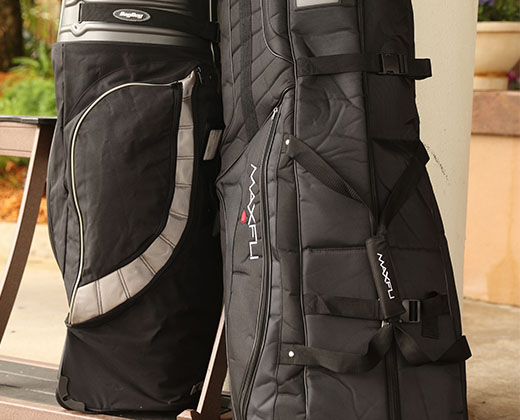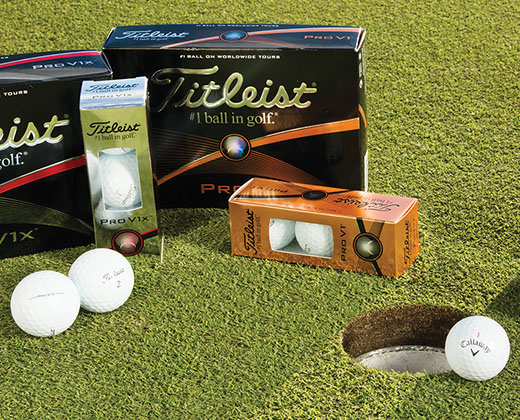How to Buy Golf Wedges
Being equipped with the right wedge can dig you out of some tough situations on the golf course. Literally.
When you think of the most valuable clubs in your golf bag, you probably think of your driver or putter. But wedges are some of the most-used clubs during a round of 18. If you want to improve your game and lower your score (who doesn't?), consider adding the proper wedges to your arsenal.
A wedge is any iron with a loft greater than 45 degrees. The loft of a club is the angle at which the face lies relative to the shaft. And wedges are the highest-lofted clubs of all. The higher the loft, the higher the ball’s trajectory.
TYPES OF WEDGES
There are four styles in the wedge family: the pitching wedge, the gap wedge, the sand wedge and the lob wedge. Each club has a specific loft that makes it more suitable for certain shots.
- The Pitching Wedge (Less Than 50 Degrees) is the least lofted of all the wedges. You can used it for full swings toward greens or for long chip shots. With a full swing, players can average between 110 and 140 yards of distance.
- The Gap Wedge (50-53 Degrees) – also known as the approach wedge – is a vital club to have. As the name suggests, it closes the loft gap between a player’s pitching wedge and sand wedge. This lets you take a full swing rather than softening up your approach with a pitching wedge or aggressively hacking with a sand wedge. An average player can expect their gap wedge shots to travel between 90 and 110 yards.
- The Sand Wedge (54-57 Degrees) is the go-to club for navigating out of sand traps and roughs. Due to its high loft angle, the sand wedge can pop the ball up and limit spin. Typically, players can feel safe using a sand wedge 80 to 110 yards from the pin.
- The Lob Wedge (58 Degrees or More) is the highest lofted wedge in your bag. It’s designed to get the ball up in the air quickly with little travel. A lob wedge is an effective tool for shots less than 80 yards, flop shots and navigating obstacles.
Because of the differences in loft, each wedge is going to have a different length to its shot. Thanks to advances in club design, the idea of only carrying a pitching wedge and a sand wedge is obsolete. It leaves too much of a gap between your average shots. It’s recommended to keep a four- or five-degree gap between your wedges. By adding a gap wedge between your pitching and sand wedge, you can better judge which club to hit. This can help avoid having too little or too much club.
BOUNCE
While you might know that wedges differ in terms of loft, the less commonly known angle is bounce angle. The bounce of a club is the area that hits the turf, hence the name. Bounce angle is measured between the leading edge and the sole, or bottom of the club.
There are three classes of bounce angles: low, standard and high. Like loft differences, different bounce angles will play better in different situations. Before determining which bounce angle is best for you, think about what type of swing you have. You will also need to consider your typical course conditions.
- Low Bounce (0-10 Degrees) works best in shots from tight lies and firm conditions. These conditions include hard ground or heavy, coarse sand. You’ll see a low bounce angle in the lower-lofted wedges, like the pitching and gap wedges. This combination of low bounce and low loft lets the player get underneath the ball and hit cleanly for longer shots. Low bounce clubs are also good for golfers with a sweeping swing and players with a shallow attack angle.
- Standard Bounce (10-16 Degrees) is the most versatile of the three bounces. Standard bounce angles range from 10 to 16 degrees and perform well in a variety of conditions. Standard bounce wedges are also a good choice for players who have average attack angles.
- High Bounce (More Than 16 Degrees) wedges are very specialized. They help you play out of very soft turf and soft, fine sand. The higher bounce angle lessens digging through the swing and creates a much smoother plane. Players with steep attack angles should also consider high bounce wedges.
GRIND
Grind commonly refers to the contouring around the sole, heel and toe areas of your wedge, and can vary from width to curvature. Along with bounce, removing or “grinding off” material from the sole will affect how the club rests on the ground at address and interacts with the turf through impact. When determining grind, you will also want to consider your angle of approach.
- The Digger: A steeper, more aggressive attack angle that creates deeper, longer divots to produce lower-trajectory shots.
- Medium: Most commonly seen in the average golfer and produces medium-sized divots with normal depth.
- The Slider: The more versatile player who prefers smaller, shallower divots for better control on a variety of shots.
CLUB FITTING
Being fitted for wedges is a critical step in optimizing performance on the golf course. A certified fitter can explain how these and other factors impact your game.
Check out your local DICK'S Sporting Goods to schedule your next wedge fitting. Our fitters are dedicated to optimizing your performance on the course. They can help match your style of play with wedges that can help lower your score.
You can also use our Wedge Selector Tool and answer a few questions about your game to get recommendations about which clubs best suit your style of play.
While loft and bounce are important, how you feel with a wedge is the most valuable quality of the club. The right wedges can help you get out of sand traps and hit the perfect chip shot during your next round of 18.








